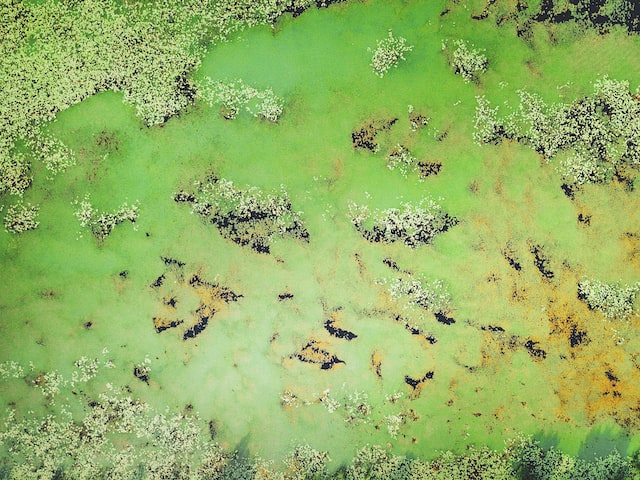- cross-posted to:
- ecomaoism@lemmygrad.ml
3
- cross-posted to:
- ecomaoism@lemmygrad.ml
When we hear the word “algae,” we often think of the green stuff that collects in ponds or on the rocks in rivers. While some see it as nothing more than a nuisance, algae is actually a significant part of the ecosystem, and we can use it as a powerful fertilizer. What is algae, and how can algae be used as fertilizer for our plants?
Algae
Algae are plant-like organisms found in nearly every conceivable habitat on Earth. They come in a wide variety of shapes and sizes and can be either multicellular or unicellular. Algae are an essential part of the food chain and provide a vital source of oxygen and nutrients for aquatic life.
While algae are often associated with water, they can also live in various environments — both aquatic and terrestrial. Algae can be found in hot springs, deserts, and even on the surface of the snow.
Are They Good for Plants and Soils?
Is algae good for plants? Algae are a great source of plant nutrients and can be natural fertilizers. Using them as fertilizer offers many benefits, including soil loss reduction and faster decomposition. They’re a sustainable and eco-friendly option that helps us reduce our reliance on synthetic fertilizers. Plus, they’re more cost-effective too!
Algae are rich in nitrogen and potassium, which are essential nutrients for plant growth. However, it’s crucial to ensure that the algae are already dead before we add them to our soil. If used correctly, algae can help with the water retention of soil. They create a more airy environment, allowing plants’ roots to absorb water better.
Steps To Using Algae as Fertilizer
It’s easy to use algae as a fertilizer, but we must be careful and do it correctly. Here are the steps to turning algae into biofertilizer:
Step 1: Collect the Algae
If you’re collecting algae from a pond or river, be sure to do so away from areas that might be contaminated with chemical runoff or other pollutants. You should collect algae from a clean and healthy source.
Step 2: Rinse the Algae
This step is especially crucial if you’ve collected the algae from saltwater. You want to remove as much salt as possible to prevent it from damaging the plants.
Step 3: Break Up the Algae Clumps for Drying
After rinsing, the algae should be left to dry in the sun. You can use cardboard or a screen to help with this process. Once the algae are dry, they can be crumbled or ground into a soil-like consistency.
Step 4: Mix the Algae Into Compost or Soil
Lastly, you can add the algae to your compost pile or thoroughly mix it directly into the soil.
Conclusion
The next time you see algae, try harnessing its power and using it to your advantage instead of trying to get rid of it! At AlgenAir, we maximize the potential of algae and use it to create sustainable products that benefit both people and the planet. Contact us to learn more about how algae can help you!
You must log in or # to comment.


